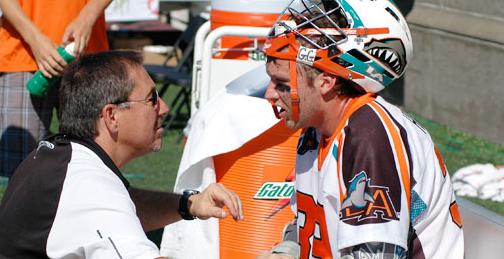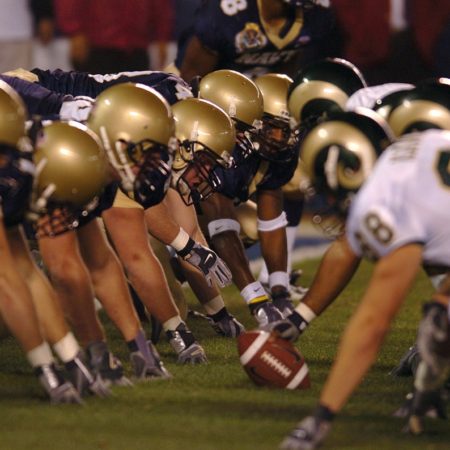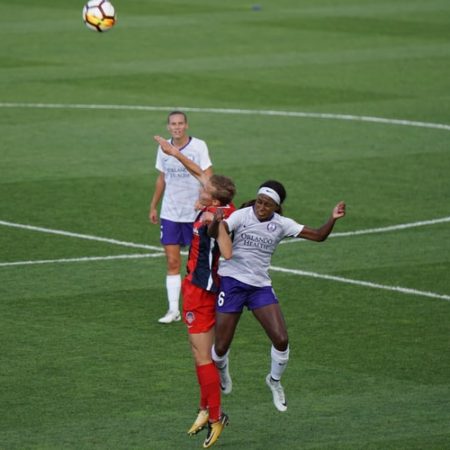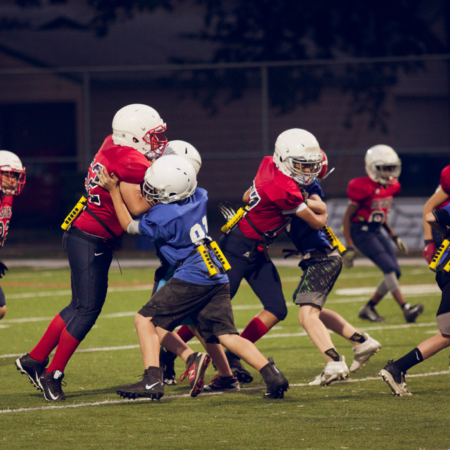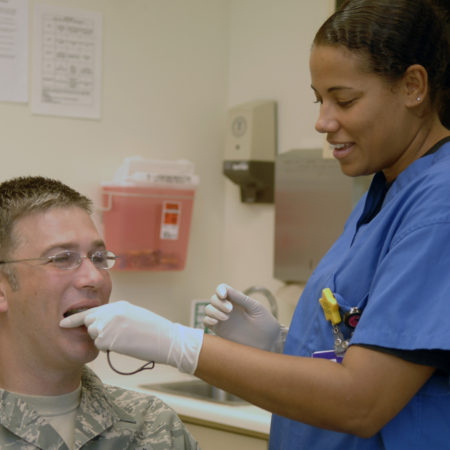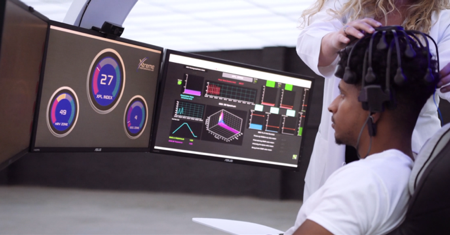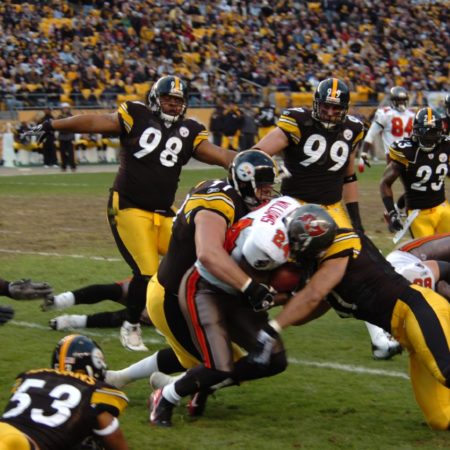Concussion In Sports – What to do?
Last Updated on August 12, 2024 by The SportsMD Editors
A concussion is a brain injury in which the brain is “concussed” inside of the skull from either a direct impact (i.e., hit by a ball) or a whiplash-type motion in which the brain is concussed through the accelerated motion of the head when the head is snapped forwards and/or backwards.
Historically, concussions have been under-reported because there may not be any outwards signs or symptoms of a concussion. The athlete may continue to compete in sports without anyone realizing that he/she is injured and when a possible concussion is identified, it’s often asked what to do?
Who gets concussions?
Concussions are sustained by athletes in many different types of sports including football, soccer, boxing, baseball, softball, basketball, diving, and cheerleading. Sports with a higher incidence of concussions include collision sports like football.
Concussion Symptoms and Classifications
Historically, concussions were graded based on the amount of time that an athlete was unconscious. It is now widely recognized that “loss of consciousness” is not a good predictor of the severity of a concussion.
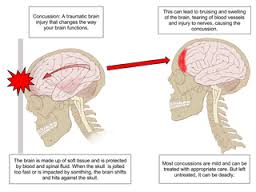
Determining the classification of a concussion has shifted from using loss of consciousness as the primary criterion to the length of time that signs and symptoms of a concussion are experienced by the athlete. The key to classifying concussions is to note the number of symptoms that an athlete experiences along with the length of time that the athlete experiences the symptoms on a concussion symptom checklist.
Symptoms can be listed on the left side of the page with the dates across the top. All the symptoms that are experienced by an athlete should be checked off on a daily basis. This concussion symptom checklist can be given to the sports medicine professional to track an athlete’s recovery and progress.
The signs and symptoms of concussion include somatic (headache), cognitive (fogginess), emotional (moodiness), physical (nausea/vomiting), and behavioral (irritability). The following are a list of possible signs and symptoms that an athlete may experience with a concussion:
• Headache
• Dizziness
• Nausea/vomiting
• Delayed verbal/motor response
• Confusion/difficulty concentrating
• Disorientation
• Slurred or incoherent speech
• Incoordination
• Ringing in the ears
• Inability to remember recent or past events
• Loss of consciousness
• Sleep disturbances
• Photophobia (sensitivity to light)
• Sensitivity to loud noises
• Fogginess
All athletes, parents, coaches, and athletic administrators need to be educated that an athlete experiencing any of the above symptoms needs to be immediately pulled from the activity and further evaluated by a sports medicine professional. If a sports medicine professional is not providing medical care for the event, the athlete needs to be referred for medical attention.
Time to recovery varies depending on the severity of the injury and the number of concussions that an athlete has had. Research published by Collins, et.al (November, 2002) reported that 40% of athletes recover in one week, 60% in two weeks, 80% in three weeks, and 90% in four weeks.
Concussion diagnosis
One of the greatest challenges in diagnosing concussions in the past was that the diagnostic tools used to diagnose brain injuries (CT scan, MRI, x-ray) did not detect a concussion because a concussion leaves no physical trace of damage in the brain.
However, there are now a number of concussion assessment tools on the market currently used in sports medicine. One of the more important trends is the use of baseline testing athletes prior to an injury. Assessment tools are administered during the pre-participation physical exam and can provide the medical staff with baseline pre-injury measurements on neurocognitive tests. These tests are then administered after the athlete sustains a concussion. The results are then compared to the baseline test to determine the progress and recovery of the athlete.
A number of concussion screening tools are available including:
Standardized Assessment of Concussion (SAC)
Balance Error Scoring System (BESS)
Symptom checklist
Computerized balance testing
Immediate Post-Concussion Assessment and Cognitive Testing (ImPACT)
Causes of concussions
The mechanisms of injury for concussion are unique to each sport. Some common causes of concussions are head to head contact, head to body contact, head to ground contact, and ball to head. One of the sports with the highest incidence of concussion is football.
Although football players are required to wear helmets, helmets cannot prevent all possible head injuries. Football helmets even carry a “risk” label stating that athletes wearing the helmet may be at risk for catastrophic injury or even death while using the helmet.
Because specific hits in football are known to cause concussions and neck injuries (i.e., helmet-to-helmet hits) these hits are now illegal in the sport of football. However, one can still see these types of hits at all levels in football. Properly taught mechanics and enforcing the rules can decrease the incidence of some of these types of injuries.
In the sport of soccer, concussions are most commonly caused from “head-to-head” collisions when two athletes are competing for the same ball as in a “header”. While direct collisions are one cause of concussions, impact with a high-speed implement is another common cause of concussion.
Baseball and softball players can be hit in the head while either at the plate or on the field. While at the plate, the ball players are somewhat protected by a helmet. However, the helmets used by most players can only withstand forces of up to 70 mph.
Because of this Rawlings has developed the Rawling100 helmet that was designed to withstand forces of up to 100mph which would be typical of a fastball at the professional level. These helmets were distributed by Rawling in 2009 to minor league teams for implementation and feedback.
Both baseball and softball pitchers are at significant risk for concussion-type injuries because of their proximity to the plate. Depending on the level of competition, softball pitchers may be within 35 feet of the plate after releasing the ball. If a ball is hit off of a pitch traveling 50mph to 60mph, the ball can hit the pitcher before the pitcher has time to react.
Baseball pitchers are at risk because of their follow-through mechanics after release of the pitch. Once a baseball pitcher releases the ball, his follow through mechanics continue to carry the athlete into a position in which his back is facing the batter. If a ball is hit up the middle as in a line drive, the pitcher does not have an opportunity to react defensively before the ball has found its target.
Falls can be another cause of concussion as seen in basketball and diving. Any athlete who falls greater than the distance of his/her height can be at risk for a head injury. A basketball player who goes up in the air for a rebound and gets undercut can then fall and have a collision with the floor. Because the floor does not have any give, all of the force between the colliding forces is absorbed into the skull and brain of the athlete resulting in a significant injury.
Concussion treatment. What to do?
The recommendation coming out of the 3rd International Conference on concussion in Sport held in Zurich (November 2008) is that an athlete diagnosed with a concussion needs to have both physical and cognitive rest until symptoms dissipate and then a carefully monitored symptom-free program of graded exertion prior to medical clearance (McCrory, P., Meeuwisse, W., Johnston, K., Dvorak, J., Aubry, M., & Molloy, M, 2009).
Although it has long been known that is an emerging trend. The basis underlying cognitive rest is that the brain needs rest in order to heal just like any other musculoskeletal injury. The brain takes longer to heal if the brain is actively engaged.
Click the following link for more information on concussion treatment.
Concussion Treatment
With this in mind, it is now recommended that student-athletes diagnosed with concussions be kept home from school with instructions of no brain activity including the use of computers, video games, and no texting devices. Cognitive rest is especially important the first 48 hours post-injury.
Athletes may also suffer from photophobia (sensitivity to light). Individuals with photophobia will be more comfortable in a setting void of sunlight or bright lights.
The most important aspect in the care of a recovering athlete is that the athlete is monitored by an adult throughout the time that the athlete is experiencing concussion symptoms. The purpose of close monitoring is to ensure that the athlete does not digress in his/her responsiveness indicating a possible life-threatening brain injury.
As the athlete’s symptoms begin to dissipate, the athlete can gradually begin increasing their cognitive and physical activities. However, if the symptoms return, the athlete needs to reduce their activity until the symptoms dissipate again.
What happens if I return to sport before my symptoms clear?
The risk of an athlete returning before a concussion has completely healed is a life-threatening condition called second impact syndrome. As the name implies, second impact syndrome occurs when an athlete sustains a second impact to the brain before the initial injury has healed.
The second impact results in rapid swelling within the skull increasing the intracranial pressure and compromising the brain stem (part of the brain responsible for regulation of the cardiac and respiratory functions). What is devastating is that the time from second impact to brain stem failure is only minutes (usually two to five).
Adding to the devastation of this syndrome is that most cases have occurred in children and adolescent athletes (Anderson, M., Hall, S., & Martin, M., Foundations, 2010). Because sports medicine professionals are not on the sideline in most youth sports, the fatality rate is high.
Athletes need to be taught to be honest and self-report their symptoms to parents, coaches, and sports medicine personnel. There are reports of high school athletes who have died from second impact syndrome who told their friends about their headaches, but who did not report their symptoms to coaches or sports medicine personnel.
Can concussions cause permanent brain damage?
Research underway at the Center for the Study of Chronic Traumatic Encephalopathy (CTE) at the University of Boston’s School of Medicine has revealed permanent brain damage in the brains of retired NFL football players who had been diagnosed with multiple concussions. This research is the first of its kind to link permanent physiological changes in the brain to multiple concussions.
In a study of 111 brains of NFL players, 110 had CTE, the degenerative disease caused by repeated blows to the head https://t.co/WL2utpi7FY pic.twitter.com/12QjlqxtaN
— The New York Times (@nytimes) July 26, 2017
How many concussions can I have and still compete?
There is no definitive answer to this question. Because each athlete experiences the signs and symptoms of concussion differently, this decision needs to be made by the athlete, the athlete’s parents, and the athlete’s sports medicine team.
The research has shown that athletes with recurrent concussions take longer to recover and have more severe symptoms with each successive concussion. While an initial concussion may have symptoms lasting only one to two days, symptoms of subsequent concussions can last for weeks and even months.
Research published in Neurosurgery (Collins, M.W., et. al., 2002) reported that athletes with three or more concussions were more likely to suffer loss of consciousness, anterograde amnesia (loss of memory for events immediately following the injury), retrograde amnesia (loss of memory for events immediately preceding the injury), and confusion.
Concussion Recovery
The recommendations for return-to-play protocol were published in the Consensus Statement on Concussion in Sport: The 3rd International Conference on Concussion in Sport held in Zurich (November, 2008). The recommendation is for a graduated return-to-play protocol following a step-by-step progression.
The protocol includes five rehabilitation stages. The athlete completes the activity on one day and then can progress to the next stage the following day if the athlete is asymptomatic (symptom free) during the activity. The athlete may only start the progressions when he/she is asymptomatic at rest.
Stage 1 – Light aerobic exercise (walking, swimming, or stationary cycling) keeping exercise heart rate to less than 70% of maximum predicted heart rate and no resistance training.
Stage 2 – Sport specific exercise (activities that incorporate sport-specific skills excluding any head impact activities)
Stage 3 – Non-contact training drills (progress to more complex drills, but no contact).
Stage 4 – Full-contact practice (following medical clearance, participate in normal practice activities).
Stage 5 – Return to competition
If any concussion symptoms return during any of the stages, the athlete should return to the previous level and try to progress again after a 24 hour period of rest.
If you suspect that you have a concussion, it is critical to seek the urgent consultation of a local sports injuries doctor for appropriate care.
Getting a Second Opinion
A second opinion should be considered when deciding on a high-risk procedure like surgery or you want another opinion on your treatment options. It will also provide you with peace of mind. Multiple studies make a case for getting additional medical opinions.
In 2017, a Mayo Clinic study showed that 21% of patients who sought a second opinion left with a completely new diagnosis, and 66% were deemed partly correct, but refined or redefined by the second doctor.
You can ask your primary care doctor for another doctor to consider for a second opinion or ask your family and friends for suggestions. Another option is to use a Telemedicine Second Opinion service from a local health center or a Virtual Care Service.
Get a Virtual Sports Specialized appointment within 5 minutes for $29
 When you have questions like: I have an injury and how should I manage it? How severe is it and should I get medical care from an urgent care center or hospital? Who can I talk to right now? SportsMD Virtual Urgent Care is available by phone or video anytime, anywhere 24/7/365, and appointments are within 5 minutes. Learn more via SportsMD’s Virtual Urgent Care Service.
When you have questions like: I have an injury and how should I manage it? How severe is it and should I get medical care from an urgent care center or hospital? Who can I talk to right now? SportsMD Virtual Urgent Care is available by phone or video anytime, anywhere 24/7/365, and appointments are within 5 minutes. Learn more via SportsMD’s Virtual Urgent Care Service.
References
- Anderson, M., Hall, S. & Martin, M. (2005). Foundations of athletic training: prevention, assessment, and management. (3rd Ed.). Lippincott Williams and Wilkins: Philadelphia, PA.
- Broglio, S., Macciocchi, S., & Ferrara, M. (2007). Neurocognitive performance of concussed athletes when symptom free. Journal of Athletic Training, 42(4), 504-508.
- Cantu, R., (2009). Playing with post-concussion symptoms: alarming rates and prevalence. Presented at Annual National Summit on Concussion and Other Sports Medicine Injuries Los Angeles, California, May 15.
- Collins, M. (2009). Evidence-based management of sports-related concussion. Presentation at Annual National Summit on Concussion and Other Sports Medicine Injuries, Los Angeles, California,
- Collins, M. (2009). Management of sports concussion in high school athlete: what are we learning? Presented at Annual National Summit on Concussion and Other Sports Medicine injuries, Los Angeles, California, May 15.
- Collins, M., Lovell, M., Iverson, G., Cantu, R., Maroon, J., & Field, M. (November, 2002). Cumulative effects of concussion In high school athletes. Neurosurgery, 51(5), 1175-1179.
- Covassin, T., Elbin III, R., Stiller-Ostrowski, J., Kontos, A. (2009). Immediate post-concussion assessment and cognitive testing (ImPACT) practices of sports medicine professionals. Journal of Athletic Training, 44(6), 639-644.
- DiGravio, G. (2009). Center for the study of traumatic encephalopathy announces new findings. Press Release. Boston University.
- Guskiewica, K., Bruce, S., Cantu, R., Ferrara, M., Kelly, J., McCrea, M., et al. (2004). National athletic trainers’ association position statement: management of sport-related concussion. Journal of Athletic Training, 39(3), 280-297.
- Guskiewicz, K., McCrea, M., Marshall, S., Cantu, R., Randolph, C., Barr, W., Onate, J., & Kelly, J. (2003). Cumulative effects associated with recurrent concussion in collegiate football players. Journal of the American Medical Association, 290(19), 2549-2555.
- Majerske, C., Mihalik, J., Ren, D., Collines, M., & Camiolo Reddy, C. (2008). Concussion in sports: postconcussive activity levels, symptoms, and neurocognitive performance. Journal of Athletic Training, 43(3), 265-274.
- McCrory, P., Meeuwisse, W., Johnston, K., & Dvorak, J. (2008). Consensus statement on concussion in sport – the 3rd international conference on concussion in sport held in Zurich. Journal of Science and Medicine in Sport, 12(3), 340-352.
- McKee, A., Cantu, R., Nowinski, C., Hedley-Whyte, E., Gavett, B., Budson, A., Santini, V., Lee, H., Kubilus, C., & Stern, R. (2009). Chronic traumatic encephalopathy in athletes: progressive tauopathy after repetitive head injury. Journal of Neuropathology, June.
- Salis, R., (2009). A team physician’s approach to concussion management. Presented at Annual National Summit on Concussion and Other Sports Medicine Injuries, Los Angeles, California, May 15.
- Siobounov, S., Siobounov, E., Sebastianelli, W., Cao, C., & Newell, K. (2007). Differential rate of recovery in athletes after first and second concussion episodes. Neurosurgery, 61(2), 338-344.
- Smurawa, T., & Congeni, J. (2007). Return-to-play decisions in the adolescent athlete: How to decide. Pediatric Annals, 36(11), 746-751.
- Valovich McLeod, T. (2009). The value of various assessment techniques in detecting the effects of concussion on cognition, symptoms, and postural control. Journal of Athletic Training, 44(6), 663-665.





